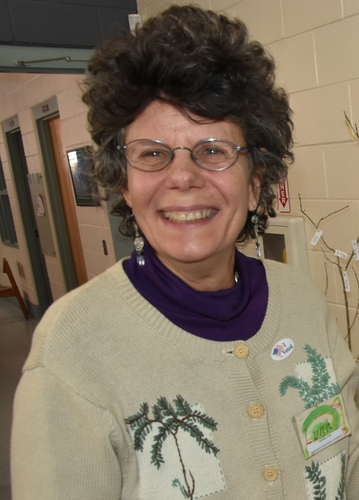EAST DUMMERSTON — “Trees have names?” Lynn Levine remembers once asking.
Now, Levine, a forester of 40 years and author of numerous nature-related books, is the one answering these questions.
With her new guidebook, Identifying Ferns the Easy Way, published this spring, Levine hopes to provide a resource that both new and experienced forest-goers could benefit from and enjoy.
One of the things that she does best, she says, is to make things simple - her goal with the new 74-page volume.
It took Levine several years to fully understand ferns by poring over thick scientific reference material - material she found so user-unfriendly that she was inspired to begin work on the book.
“To make something simple is so complex,” she said. “That's why it takes so many years.”
Identifying Ferns the Easy Way contains only a handful of pages before getting into silhouettes and illustrations of each of 28 common ferns of the Northeast by Dummerston artist Briony Morrow-Cribbs, whose work appears in a number of books, including two New York Times bestsellers.
Those using the guidebook can look at an unidentified fern and use the visuals to match the species, then learn where it grows, its distinguishing characteristics, and other notes.
In its initial pages, the book also offers a brief history of ferns, instructions and tips on identifying them, and finally what Levine describes as “the secret.”
“I always ask people if they know there's a secret,” Levine said.
When people inevitably ask what it is, she tells them that ferns are millions of years old and were once as tall as trees. She tells them about the unique and remarkable reproductive system of a fern. She explains that it's about the circle of life.
She tells them the secret.
Representation in the forest
Levine, the first female consulting forester in New England, finds that one of the driving forces behind her inspiration is her determination to offer a model for girls to get out into the woods.
“It's definitely a motivation,” she said, “especially when I've gone through so much, being the first with so many men in the field.”
Levine still remembers being told by her first employer that she was the first woman he had ever hired, and that if she didn't do well, he would probably never hire another.
She remembers a different boss stating that there were only three places where women belong.
“It wasn't in the forest,” she recalled.
“And these stories are still going on,” she continued. “Even though about 60 percent of the forestry school at [the University of Vermont] are women, they aren't necessarily the ones getting the jobs.”
She noted, however, that this problem of discrimination is trending in a positive direction.
Creativity and passion, from forestry to publishing
“When I switched from teaching, I had one of those tests that tells where your skills were, and I scored highest in creativity - and that's what makes me happy,” said Levine, who was born in Brooklyn and has lived in Vermont since 1974.
“So forestry isn't creative,” she added. “But when I'm writing and I'm sitting in the corner of my couch, I'm very visual. Just seeing the character from the books that I've written, that's an exciting time.”
For Levine, whose previous books include a guide to tracking and two titles for children, that creativity and passion is always encouraged when people approach her to say that they use her book, or that they think of her when they look at the ferns.
But her work is also fueled by those little moments.
“The most exciting time for me in the woods is if I'm thinking a lot, and all of a sudden the light hits a leaf and I wake up,” she said.
“I just look around and my mind will be going because there's always something happening in the forest,” Levine added.
